Cover crop, green manure crop, and catch crop are three interchangeable terms to describe crops that feed, build, and protect the soil and attract and feed beneficial insects and soil microorganisms.
Cover crops are planted to cover planting beds and enrich the soil. When a cover crop is turned under to decay and to feed the soil it is called a green manure; green manures add humus to the soil. When a cover crop also fills in unplanted spaces in the garden—spaces between the main crop-it is called a catch crop.
Cover crops are commonly sown toward the close of the growing season, either where a temporary crop has been harvested or between permanent plants. Cover crops cover the ground until early spring. Sometimes cover crops are planted during the main growing season when a section of the garden is bare.
A cover crop should always be turned under in spring while still green and succulent, otherwise, the work is harder to do and the crop breaks down and decays slowly.
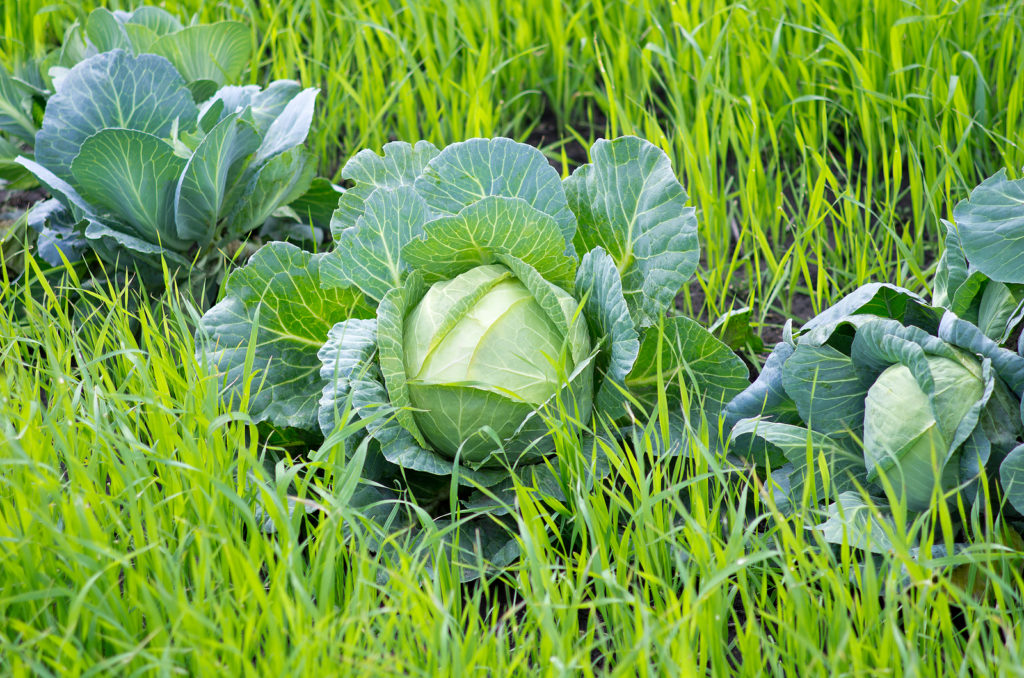
Cover crops and green manures are not always feasible in small home gardens. Sometimes there is simply not enough space for dedicated cover crops in a small garden. Compost and organic fertilizers are often more practical and can do a better job of enriching the soil in a home garden. However, whenever the garden is going to be bare for weeks or months, a cover crop should be planted.
For a three-season home garden where crops are grown in spring, summer, and fall, a good cover crop choice is a winter cover crop such as winter rye. Winter cover crops can be planted in late summer or fall to grow or sit through winter; they then can be turned under in late winter or early spring when the soil is workable—about 4 to 6 weeks before spring crops are planted.
Tools for Vegetable Gardeners at Amazon:
- A.M. Leonard Straight Rake with Ash Handle
- All-Steel Nursery Spade with D-Grip Handle
- 4-Tine Spading Digging Fork with D-Handle
- Digital Soil pH Meter Outdoors Greenhouse
- Earthwise Handheld Electric Fertilizer Spreader

Benefits of cover crops
Cover crops are plants that are grown primarily to protect and improve the soil. They are typically planted between periods of regular crop production. Cover crops act as a barrier against erosion and the leaching of soluble plant nutrients. They also check the growth of weeds and add humus to the soil as they decay.
One of the main advantages of cover crops is soil protection. The roots of cover crops help prevent soil erosion by holding the soil in place, especially during heavy rainfall or windy conditions. This is particularly important in areas where soil erosion is a significant concern (such as slopes), as it helps to maintain the quality and fertility of the soil. By protecting the soil, cover crops also reduce the need for synthetic fertilizers and pesticides, making gardening (and farming) sustainable and environmentally friendly.
Cover crops improve soil health by increasing organic matter content. When cover crops decompose, they add valuable organic matter to the soil, which improves its structure and nutrient-holding capacity. This, in turn, enhances soil fertility and microbial activity, promoting better nutrient availability for future crops. Cover crops can help to suppress weeds by maintaining a dense plant cover, reducing competition for resources, and reducing the need for herbicides.
Cover crops can also play a crucial role in managing nutrient cycles. By capturing excess nutrients in the soil, cover crops help prevent leaching and runoff, reducing the risk of water pollution. They can also accumulate nutrients from deeper soil layers, making them more accessible for subsequent crops. This not only improves nutrient utilization but also reduces the need for synthetic fertilizers, which can be costly and have adverse effects on the environment.
Cover crops provide additional benefits such as attracting beneficial insects and pollinators, reducing pest populations, and improving biodiversity in the garden. Cover crops contribute to the overall resilience and sustainability of a garden by reducing reliance on external inputs and promoting more natural pest and weed management practices.
Incorporating cover crops into your garden practice can lead to healthier soils, increased crop yields, and a more sustainable and resilient farming future.
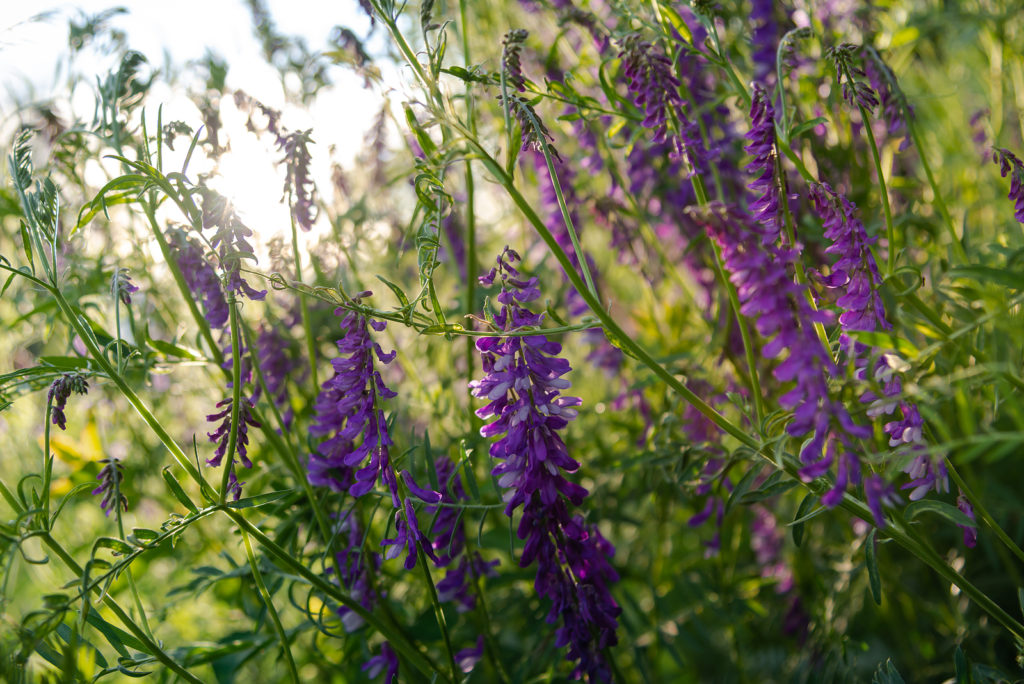
What cover crops do
Add nutrients to the soil
Cover crops increase soil fertility. They add nutrients and organic matter to the garden as green manure. Green manure is similar to compost only it decomposes in the garden rather than in a compost pile. Cover crops enhance soil fertility. Certain cover crops, such as legumes, have the ability to fix atmospheric nitrogen into a form that plants can use. When these cover crops are eventually tilled into the soil, they release nitrogen, benefiting the subsequent crop. By using cover crops, gardeners can reduce their reliance on synthetic nitrogen fertilizers, which means cost savings and decreased environmental impact. Legume cover crops are especially good at adding nitrogen to the soil.
Retrieve nutrients from the soil
Cover crops retrieve nutrients from deep in the soil and bring them to the surface. The roots of cover crops grow deep to nutrients and bring them to the surface; later when the cover crop is cut down and turned under those nutrients will remain in the topsoil.
Block weed growth
Cover crops block weeds from growing by covering planting beds not growing crops. Cover crops compete with weeds for available space, light, nutrients, and water. A cover crop can be planted in any unused section of the garden, even around growing crops. By planting crops that have dense foliage and rapid growth, they effectively smother and outcompete unwanted weeds, reducing the need for chemical herbicides or manual weeding. This is called the “cover crop smother effect.” When the cover crop dies it can be allowed to form a mulch layer on the soil surface, suppressing weed growth. Some cover crops suppress weeds via the biochemical compounds that are left behind when they decompose. This is called allelopathy. Rye, hairy vetch, red clover, and sudangrass as well as mustard exude a biochemical compound that discourages weeds.
Discourage pests and diseases
Alleopathic cover crops (see above) not only suppress weeds, they can also reduce the populations of bacterial and fungal diseases and parasitic nematodes. Brassicaceae family crops such as mustards suppress fungal disease populations through the release of naturally occurring toxic chemicals during the degradation of plant tissue. Some cover crops can be used as “trap crops” to attract insect pests away from the main crop. Cover crops grown as trap crops are usually grown as the same time as the main crop. Cover crops may also attract natural predator insects that can act as a biological control of pest insects.
Encourage beneficial insects and soil microbes
Cover crops encourage beneficial insects—the flowers of many cover crops are food for beneficial insects. Cover crops encourage and feed beneficial soil microbes that break down organic matter in the soil; beneficial microbes, in turn, eat pathogen-causing fungi and bacteria. Legume cover crops form symbiotic relations with rhizobial bacteria that reside in legume root nodules. The bacteria coverts atmospheric nitrogen gas to biologically available ammonium. Cover crops increase soil microbial activity.
Prevent soil erosion
Cover crops protect the soil from erosion, especially during the rainy season and winter. Cover crops protect the soil from erosion, especially during heavy rains or windstorms. Their extensive root systems help bind the soil particles together, preventing valuable topsoil from being washed away. This protection is especially crucial in areas prone to erosion or on sloping lands where the soil is more vulnerable. Cover crops can be used as a mulch to prevent soil erosion.
Improve soil structure
Cover crops improve soil structure and increase organic matter content. Cover crops increase soil organic matter and biomass over time. Increased organic matter in the soil enhances soil structure. Cover crops break up compacted topsoil and breakthrough hardpan and compacted subsoil; many cover crops are deep-rooted. Their roots help break up compacted soil, allowing for better drainage and root penetration. As cover crops break down, they enrich the soil with organic matter, which enhances its water-holding capacity, nutrient retention, and overall health.
Manages water
Cover crops manage water in the soil. Cover crop biomass allows water to trickle down through the soil rather than run off the soil. Cover crop root growth helps open soil pores through which water can filter. Water storage in the garden is enhanced by cover crops. The moisture in cover crops also increases moisture in the soil when the cover crop is turned under and incorporated into the soil. One note of caution, if a cover crop grows into summer or warm weather, it can draw moisture from the soil at the expense of the main crop.
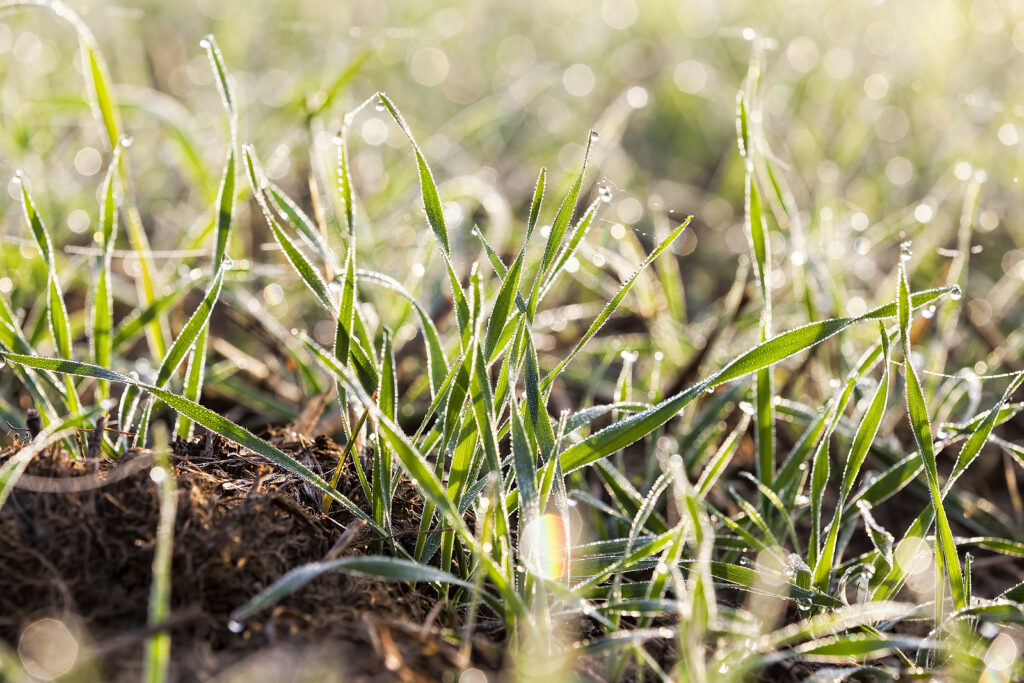
Select an appropriate cover crop
Selecting the appropriate cover crop is crucial as it can greatly impact the success of the overall garden system.
When choosing a cover crop, consider your primary objectives. Different cover crops offer various advantages, such as nitrogen fixation, erosion control, weed suppression, and improved soil structure. Leguminous cover crops, like clover or vetch, for instance, have the ability to fix atmospheric nitrogen into the soil, making them ideal for enhancing fertility. These cover crops can also suppress weeds by outcompeting them for sunlight and nutrients.
When selecting a cover crop consider the environmental conditions and the characteristics of the cover crop. Some cover crops are more suitable for cool climates, while others thrive in warmer regions. Root depth, growth rate, and water requirements are factors that should be carefully evaluated. For example, ryegrass is known for its extensive root system that helps prevent soil erosion, making it an excellent choice for sloping sites.
Also, consider the subsequent main crop that will follow the cover crop. Certain cover crops, such as oilseed radish or buckwheat, are often selected for their ability to improve soil fertility and reduce pests. These cover crops release certain bioactive chemicals into the soil that can help inhibit the growth of pathogens and pests, thus benefiting the next crop in the rotation.
Choosing the appropriate species that is well-suited to the climate, soil type, and desired benefits is essential. Each cover crop exhibits different growth habits, nutrient requirements, and environmental tolerances, making it crucial to select the right one for the specific garden.
By choosing a cover crop that aligns with these factors, gardeners can enhance soil health, combat erosion, suppress weeds, and improve overall garden productivity. With the right choice, cover crops can be a game-changer in sustainable agriculture, providing long-term benefits for both the garden and the environment.
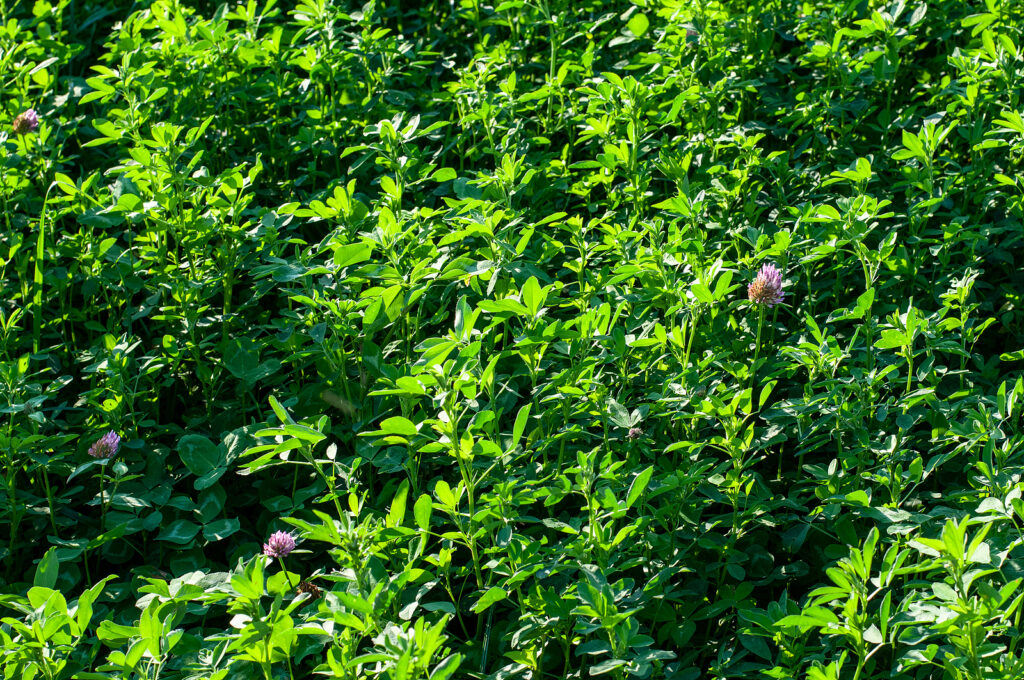
Two types of cover crops — legumes and non-legumes
There are two broad categories of covers crops commonly planted, legumes and non-legumes.
Legumes
Legume cover crops can fix nitrogen in the soil which will benefit subsequent crops. Legume cover crops include red clover, crimson clover, vetch, peas, and beans. You can usually reduce your nitrogen fertilizer for the subsequent crop when following a legume.
Legumes also help prevent erosion and support beneficial insects and pollinators. Legumes also can increase the amount of organic matter in soil, although not as much as grasses. Legumes differ in their adaptability to soil and climatic conditions; ask at the garden center or cooperative extension near you for legumes that grow best where you live.
Non-legumes
Non-legume cover crops include cereals such as rye, wheat, barley, and oats, as well as annual ryegrass and broadleaf species such as buckwheat, mustards, and brassicas including radishes. Non-legumes are useful for scavenging nutrients from the soil, providing erosion control, suppressing weeds, and producing large amounts of residue that adds organic matter to the soil.
Plant a non-legume in a garden where the soil is particularly high in nitrogen. If a large amount of nitrogen is left in the soil from a summer crop or if manure has been overapplied in the garden, non-legumes can scavenge the nitrogen and balance soil nutrients. If you want to reduce the amount of nitrogen in the soil for subsequent crops, plant non-legumes.
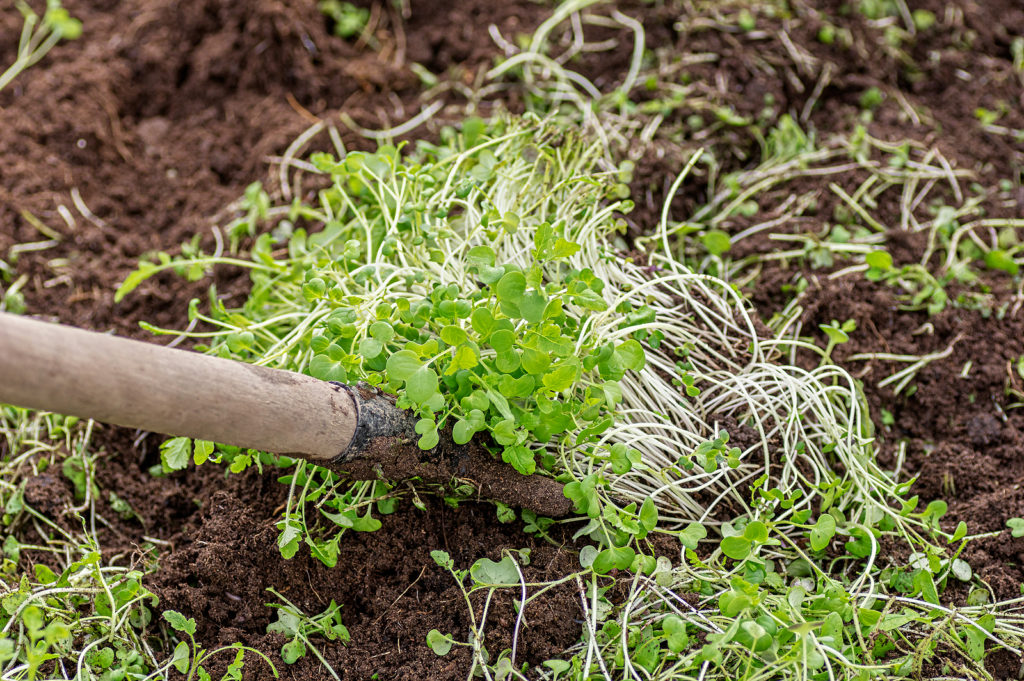
When to plant a cover crop
Cover crops can be part of a garden crop rotation, growing in a planting bed or field for an entire season. But this is not always doable in the home vegetable garden.
A good home garden cover crop strategy is to use cover crops as catch crops. A catch crop is a filler crop; it grows in a vacant spot before or after a main crop. A catch crop can be interplanted with your main crops.
Spring cover crops
Sow spring cover crops as soon as the soil can be worked in spring. Sow frost-hardy cover crops such as winter rye or oats in beds where warm-season summer crops such as peppers, melons, and tomatoes will be planted later. Spring cover crops can grow for 6 to 10 weeks before the main crops are planted. Mow down or chop up and turn under the spring cover crop 1 week after it starts to flower. Turn it under not less than 2 weeks before you sow your main crop.
Midseason cover crops
Grow summer or midseason cover crops in regions where the weather gets too hot for warm-season vegetable crops—where temps rarely dip below 90° Sow summer cover crops after spring leaf and root crops have been harvested. Cut down summer cover crops about 3 weeks before you plan to sow fall vegetable crops. It’s best to wet down the garden and cover the crop before turning it under in very hot regions—this will help decomposition. A fast-growing cover crop is buckwheat.
Winter cover crops
Winter cover crops can be planted as soon as the summer harvest comes out of the garden. When possible sow the winter cover crop at least 6 weeks ahead of the first killing frost. Some winter cover crops will survive through the winter; others will die during the winter—but can remain in place to stem erosion. Two very fast-growing cover crops for winter are oats and winter rye.
Main-season cover crops
Cover crops can be planted during the main growing season as filler or catch crops. These cover crops are interplanted with your main crops. Main season cover crops serve as a living mulch to keep down weeds and slow soil moisture erosion—while feeding the soil. Main season cover crops also protect the soil and earthworms and microorganisms below from hot temperatures. Sow main season cover crops as an undercrop—that is wait 3 to 4 weeks after sowing your main crop then sow the cover crop as an underplanting. Wait so that the roots of the cover crop are not competing with the main crop.
Full-season cover crops
Cover crops can be planted as part of a crop rotation for a full season. A full-season cover crop will knock down most perennial weeds and will reduce pest root-knot nematode populations. Full-season cover crops can also feed the soil—legumes will draw nitrogen up from the soil and cover crops turned under will act as green manure or compost feeding the soil. Put full-season cover crops in your four-year crop rotation—adding an additional year to create a five-year crop rotation (this is doable in very large gardens, but less easy to do in small gardens).
How to plant a cover crop step-by-step
Planting a cover crop is easy. Here are the steps:
- Remove weeds and crop debris from the planting beds; break up clumps of soil and rake the seedbed even.
- Determine the square feet you intend to plant; you will need about 1 cup of cover crop seed for every 50 square feet you want to plant.
- Broadcast the very small cover crop seed (such as annual rye or clover) across the planting bed. Large cover crop seeds such as beans and peas can be sown in furrows ½ inch to 1 inch deep 6 inches apart. After broadcasting or seed sowing rake the bed lightly to ensure the seed is covered. If you are sowing legumes such as soybeans, clovers, and vetch as a cover crop, add an inoculant that contains the bacteria needed to work with the cover crop’s roots to fix nitrogen.
- Keep the seedbed just moist until the cover crop germinates and becomes established. If the weather is very hot keep the seedbed from drying out by sprinkling straw over the seedbed. If birds start digging up the seed, lay a loose spun poly row cover over the planting bed.
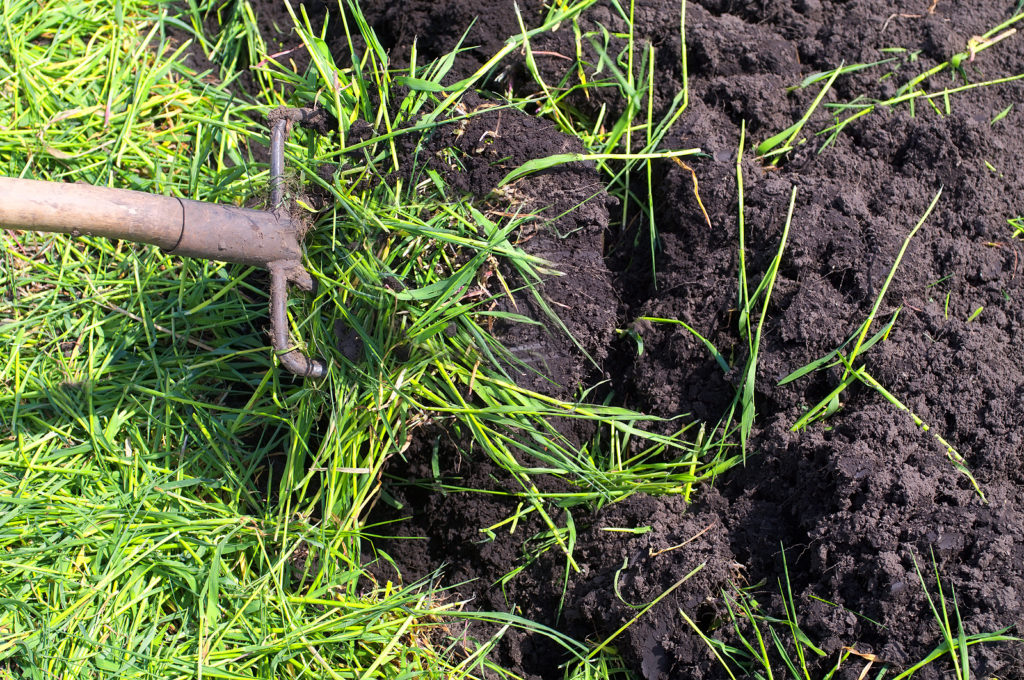
Maintain the cover crop
Maintaining the cover crop is essential to maximize its benefits. Regular monitoring is crucial to ensure the cover crop is growing efficiently and not competing excessively with crops that remain in the garden. This can be done by assessing its growth rate, nutrient requirements, and water needs. Adjustments in irrigation and fertilization may be necessary to maintain a healthy balance.
Regularly inspecting the garden for weed growth and promptly removing or managing weeds is essential to prevent competition between a cover crop and weeds for resources.
To ensure effectiveness, it is essential to manage cover crop termination. Timing the termination correctly is crucial to prevent the cover crop from becoming a weed itself and effectively transitioning the nutrients back into the soil.
How to kill and turn under a cover crop
When the cover crop is green and succulent and before it flowers, it is time to turn it under and let it begin decomposing. There are a couple of ways to turn the cover crop:
- Chop or mow the top growth (use a lawn mower, string trimmer, hedge trimmer, or hand sickle or scythe) let it dry in place and then hand dig or turn it under. If the top growth is higher than 2 feet, you may want to remove all but about 2 inches of stubble from the garden as it will be very slow to decompose; leave about 2 inches of top growth stubble and roots in place to turn under; the tall top growth can be used as a mulch in other beds or put in the compost pile.
- Rototill the cover crop under. Set the tiller in a shallow setting; do not till the crop residue too deeply as it will be slow to decompose. Rototilling is likely to disturb or kill earthworms and soil microbes so it is not recommended unless the garden is very large and slow decomposition is not possible.
Spring-planted cover crops will likely not decompose fast enough to follow with a summer main crop, so it is imperative that you remove spring-planted cover crop top growth before turning the stubble and roots under. Do this several weeks before planting the main crop. Be sure to turn the stubble and roots under fully.
Fitting the cover crop into crop rotations
One of the biggest challenges of cover cropping is to fit cover crops into your garden planting rotations. You may need to develop new rotations that take full advantage of cover crop benefits. Cover crops planted in autumn or winter for cold weather protection, usually grow in the garden when other crops are not growing. The cover crop stands alone in the rotation.
If you plant a cover crop as a catch crop, holding a spot in the garden while other crops are growing, be sure to select a cover crop that will not overwhelm the neighbor plants in height or spread. Nitrogen-fixing cover crops are a good choice to follow fruiting crops such as tomatoes and peppers which draw nitrogen and other nutrients from the garden,
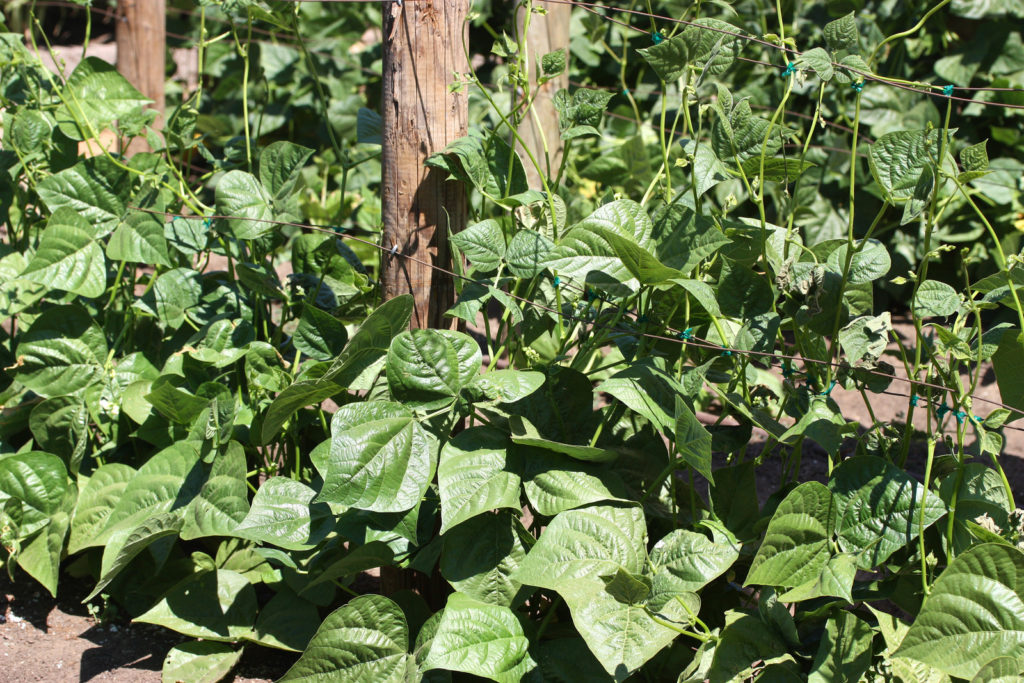
Cover crops for the vegetable garden
Peas
Garden peas (Pisum sativum) can be grown as a cool-weather cover crop/green manure crop that is edible; broadcast pea seeds in unused spaces in the garden; plant early spring or early fall—grows best in cool weather; will fix nitrogen in the soil. Allow the peas to spread across the open space.
Beans and soybeans
Green and yellow snap beans (Phaseolus vulgaris) and soybeans (Glycine max) can be grown as warm-weather green manure, cover crop; sow in spring 3 weeks after the last frost and continue to sow until 8 weeks before the first fall frost; beans sprout quickly; plant beans 5 to 6 inches from other main crop plants; beans fix nitrogen in the soil; beans are an edible cover crop. Allow the beans to spread across the open space.
Buckwheat
Grow buckwheat (Fagopyrum esculentum) as a cover crop from spring to mid-summer. It is a warm-weather cover crop; ready to turn under in 6 weeks; do not let it go to seed; frost tender; fast growing; smothers weeds; releases potassium as it decomposes; roots grow deep and improve soil texture; attracts pollinating bees and predatory wasps. Grows to about 2 feet tall.
Annual ryegrass
Annual ryegrass (Lolium perenne or Lolium multiflorum)—not perennial ryegrass–can be grown as a cover crop; sow spring through fall; easy to work into the soil; winter cold will kill; can serve as winter protection of soil after it dies back; turn under before ryegrass drops seed; loosens compacted soil; attracts beneficial insects. Annual ryegrass can grow to 2 feet tall; the roots are adventitious.)
Winter rye
Winter rye (Secale cereal) is a grain crop, not a grass; is fast growing spring and fall; plant up to 3 weeks before first fall frost; winter hardy; good winter cover crops; improves soil structure; don’t let it grow taller than 10 inches or remove top growth before planting main crop; requires some time to decompose.
Oats
Oats (Avena sativa) form a thick mat that will prevent erosion and the proliferation of weeds. Oats can be planted in late summer or early autumn; they will die over winter. Oats can grow to 4 feet tall. Oats do not do well in hot weather.
Rapeseed
Rapeseed (Brassica napus) is a broadleaf plant that grows quickly in warm weather. It will smother weeds. Rapeseed can survive mild winters. Do not let rapeseed flower and set seed; it will quickly self-sow and become weedy. Rapeseed grows to about 1 foot tall.
Clovers
Clovers–crimson clover, Alsike clover, Berseem clover–are nitrogen-fixing. Many are winter hardy and can survive through winter to begin growth again in spring. Crimson clover (Trifolium incarnatum) grows 8 to 20 inches tall. Alsike clover (Trifolium hybridum) grows to about 1 foot tall. Berseem clover (Trifolium alexandrinum) grows 1 to 3 feet tall.
Hairy vetch and alfalfa
Hairy vetch and alfalfa are nitrogen-fixing. They will survive winter and grow again in spring. Hairy vetch (Vicia villosa) is a sprawling vine that rarely exceeds 3 feet. Alfalfa (Medicago sativa) grows from 2 to 3 feet tall. It is heat tolerant.
Winter wheat
Winter wheat (Triticum aestivum) is cold hardy. It can be planted in late summer to grow into autumn; it will resume growth in early spring. Winter wheat, as well as winter rye, can be planted in late spring with warm-season crops such as tomatoes, peppers, and squash. Winter wheat can be turned under in late spring. Winter wheat grows to 2 feet tall or more.
Other cover crops
Other cover crops include Alsike clover, Austrian winter pea, Berseem clover, cowpea—southern pea; crimson clover, fava bean, hairy vetch, kale, oats, oilseed radish, rape, red clover, soybean, Sudangrass, sweet clover, white clover.
Adding phosphorus and potassium to the garden
Many cover crops—especially legume family crops– add nitrogen to the soil, but at the same time, they draw up phosphorus and potassium. When setting out fruiting crop transplants in spring such as tomatoes, peppers, and melons, add a phosphorus and potassium organic fertilizer to planting holes to make up for any loss of those nutrients to cover crops.
Recommended articles:
Garden Planning Books at Amazon:
- Vegetable Garden Almanac & Planner
- Kitchen Garden Grower’s Guide Vegetable Encyclopedia
- Vegetable Garden Grower’s Guide
- Tomato Grower’s Answer Book















